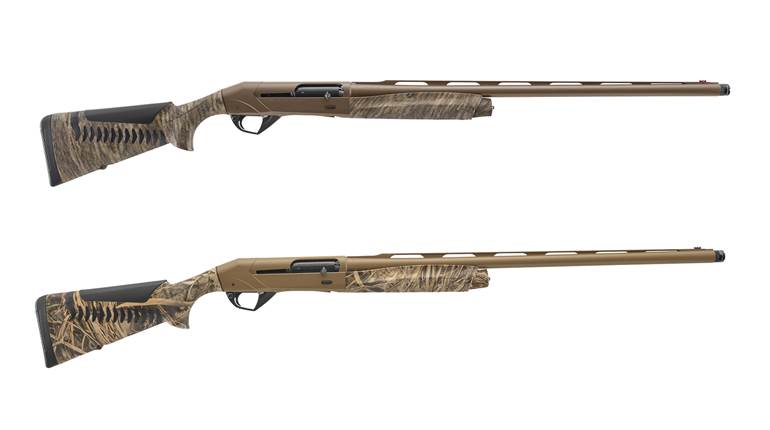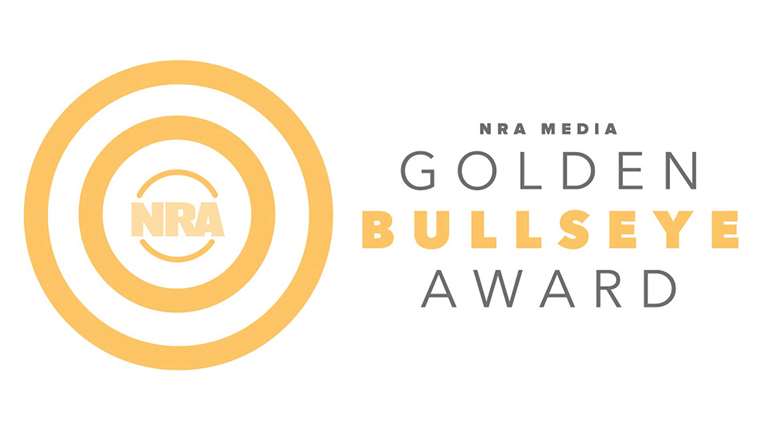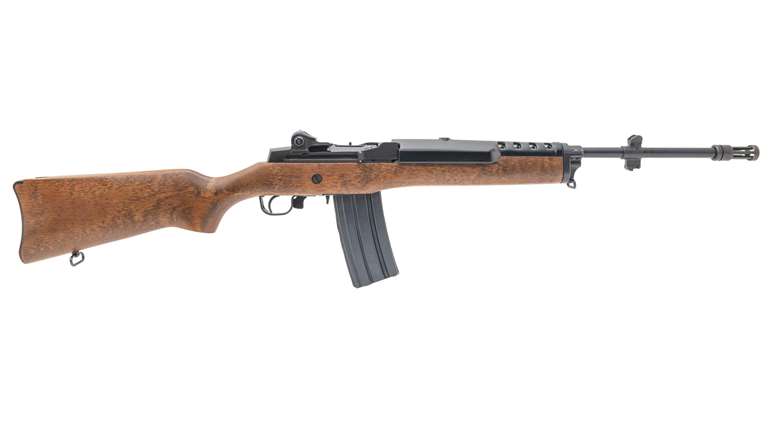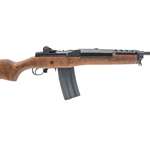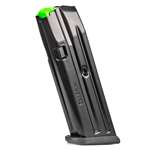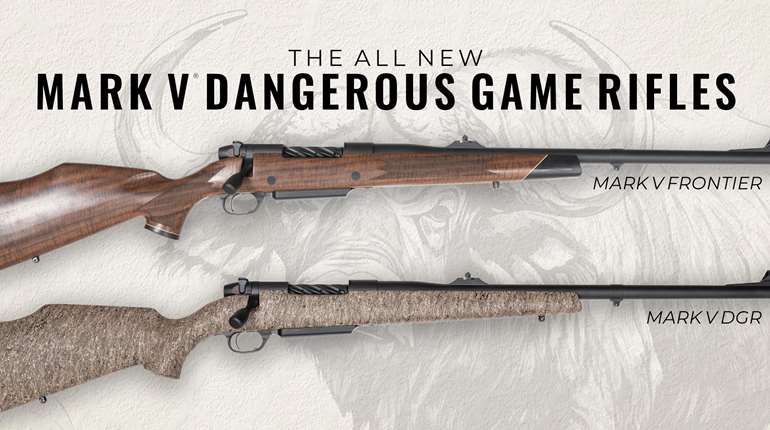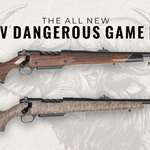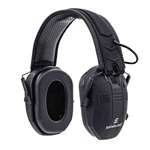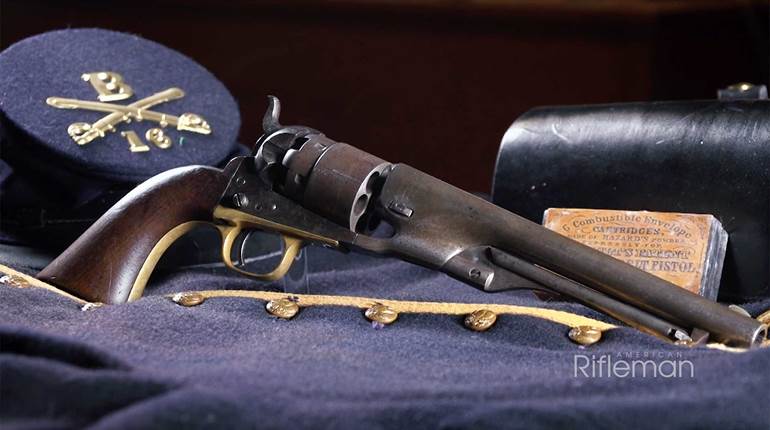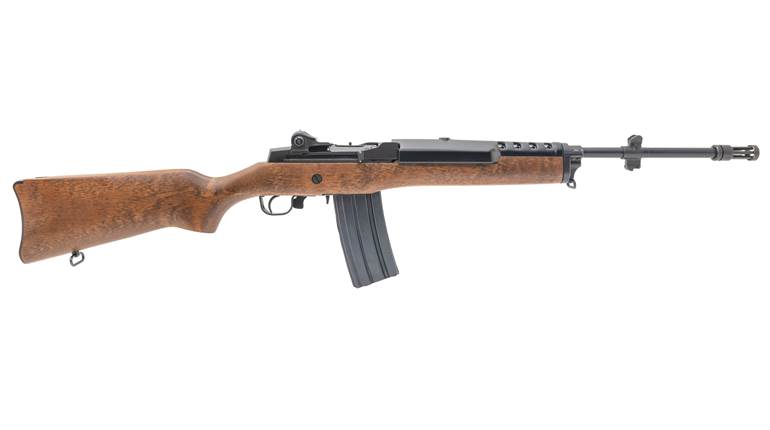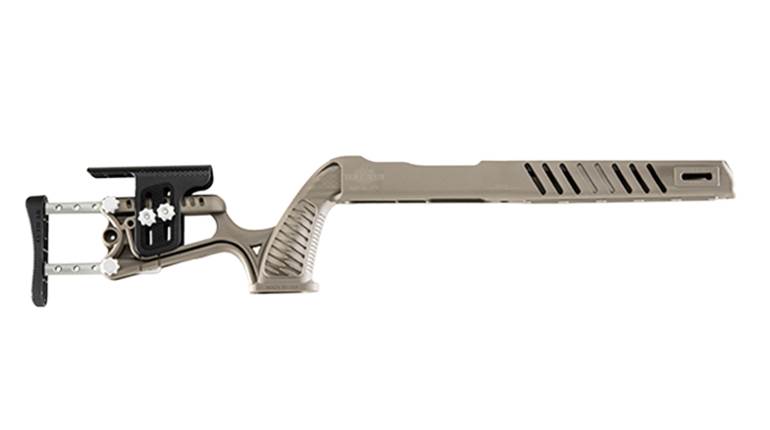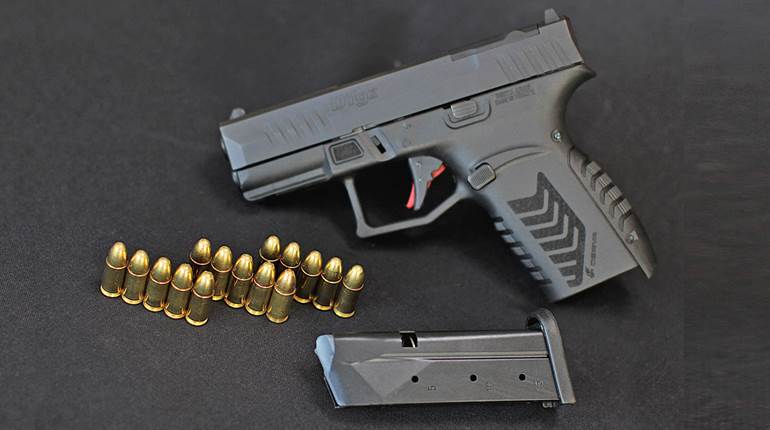
Americans have never been reluctant to take up arms in their own defense. Thus, in the increasingly belligerent circumstances of modern urban society, many Americans have chosen to exercise their Right to Carry. They comply with applicable statutes, go through the appropriate training and certification and go heeled (in Dodge City parlance). Gunmakers are very competitive about developing better and better hardware. Such a gun is the all-new Solo from Kimber. I refer to the pistol as “all-new” because the maker developed a concealable 9 mm Luger that’s new from muzzle to butt. It stands alone among concealed carry pistols.
First, let’s get a good description on the table. As a concealed carry semi-automatic, the Solo needs to be small, and it is. The gun is 3.9-inches tall, 5.5-inches long and 0.995-inches thick. With these dimensions, as well as a weight of 17 ounces, the Solo is in the same general category as competing models from Kahr, Kel-Tec, Rohrbaugh, Ruger, SIG Sauer, Taurus and Walther. Further, the basic construction of the little Kimber is an aluminum-alloy frame with a stainless steel barrel and slide.
Other than the plastic stocks, there is no polymer used in the pistol’s construction. Since it is a small 9 mm Luger pistol, the Solo is recoil-operated, wherein the barrel and slide are locked in battery until they move back in firing. After disengaging from the barrel, the slide continues rearward for extraction and ejection of the fired cartridge. This compresses the recoil spring, which then drives the slide forward for feeding, chambering and setting the striker for firing. It’s pretty much conventional recoil operation, albeit miniaturized for concealment purposes.
The trigger system is somewhat different from other guns of this style. Kimber terms this pistol a “striker-fired single-action.” Certainly it is striker-fired, as an exploded view shows an in-line striker that moves straight forward to impact the primer of a chambered cartridge. There is no pivoting hammer, as seen in many conventional pistols. Using a striker saves space in the action. When the shooter chambers a round and begins the trigger press, the trigger moves through a long arc, but with light pressure. It might feel like a double-action trigger, but most of the pressure is really involved in clearing a drop safety. When the slide of this pistol goes forward into battery, the striker is about 90 percent cocked, so there is only slight trigger pressure involved in bringing it fully rearward to fire.
Few of the modern breed of .380 ACP and 9 mm Luger compacts elicit the same approving comments from a handgunner who picks up his first Solo. The ergonomics of the pistol—that indefinite heft and feel—are excellent. It starts with an M1911-type grip angle and continues through a high relief cut under the trigger guard and a higher tang pocket for the web of the hand. Although the Solo is a two-finger gun in the sense that only the ring and middle fingers fit on the frontstrap, the grip is firm and positive and the gun stays in place in the hand when fired—even when rapidly firing pairs.
The cosmetics are also appealing. Solos come in only two variations: black-anodized lower and silver-finish upper (Solo Carry); and silver lower and silver-finish upper (Solo Carry STS). Other than the color of the frame finish, there is no difference. The Kimber also uses checkered plastic stocks, black in color and secured to the frame with two screws on each side. The panels fit down into frame recesses to produce a trim, finished look. I would bet that other grip options will appear as the pistol becomes more popular.
Some people have looked at the Solo and said that the new gun is a lot like the popular M1911. That is true in terms of the grip angle and shape of some of the controls. I believe the Solo more closely resembles the trim little Pocket Model Colts of 1903 and 1908, although it is somewhat smaller.
As it is a single-action pistol, the Solo requires a manual safety, which the company made ambidextrous. Also ambidextrous, the magazine catch pushes in from either side and quickly clears the six-round magazine free from the receiver. The left-side-only slide lock is a scaled-down version of the 1911’s and works the same way. All things considered, the Solo is a trim little 9 mm concealed-carry semi-automatic that hides easily and delivers fight-stopping power on short notice.
Kimber’s website and the Solo manual both make the same point: The pistol is intended for premium-quality ammunition with 124-grain or heavier bullets. They also go so far as to list three loads that produce the best results. It was those loads that I used in the shooting results that are tabulated in the accompanying table. Kimber instructions also stoutly maintain that the pistol needs to be broken-in with four magazines (24 rounds) of ammunition before it is used for defensive purposes. Actually, this is a realistic approach that more and more gunmakers are taking. Little semi-automatics are popular these days, but the only way to make a small 9 mm or even a small .380 ACP is to really push the design envelope. When dimensions, angles and cam surfaces are minimized to the point of short margins, malfunctions result. Even springs take a beating, so much that a strong spring may induce jams during the break-in cycle, work fine for a while and then return to malfunction junction as the spring wears out. Note that Kimber advises changing the recoil springs after 1,000 rounds. In my view this is to Kimber’s credit. They are simply being honest about what it takes to keep their product operational.
At the range with a Solo Carry, I began the session with the informal part of a typical evaluation first, thereby accomplishing the required breaking-in. Going well beyond the 24-round requirement, I fired a hundred rounds of Federal 124-grain Hydra-Shok ammunition. This established that the sample pistol worked without malfunction. It gave me a good overall impression of the Solo’s handling. I had no misfires. Understand that this trigger system does not provide for a second-strike capability; therefore, if you get a click and not a bang, you must perform a tap-roll-rack drill to reset the striker in the slide and clear the offending round from the chamber. By design the pistol is petite, and performing the drill under stress is difficult, because there isn’t much to get hold of. This is not a difficulty unique to the Solo, as many modern semi-automatics have the same problem.
Also, trigger reset is rather long on the Kimber. The slide cycles, but there is no short reset, so the shooter has to let the trigger go as far forward as he would on the double-action cycle of a double-action/single-action revolver. The argument for such a system is safety, as it requires a long, sweeping trigger pull for each and every shot. The trigger pull weight is about 7 pounds, and it is uncommonly smooth throughout its travel cycle. Some shooters are absolutely fanatical about the quality of their short-reset guns, but ordinary handgunners just learn what it takes to make the gun go and don’t worry about it.
By the time I got to an accuracy evaluation, I was accustomed to the Solo’s recoil, which is very sharp. It can’t be anything else when you consider that this 17-ounces pistol fires 124-grain bullets as fast as 1,052 fps. The groups averaged around 4 inchesat 25 yards, which is decent for a little pistol that does what is asked for it in terms of portability and concealability.
I believe that Kimber’s insistence on particular kinds of ammunition will not be acceptable to rank-and-file shooters who are willing to pay a considerable price for a box or two of the premium ammunition, but want to use the bargain basement stuff for training and plinking. Kimber needs to address this situation. Although the pistol I examined worked well, earlier samples were troublesome. Shooters should heed the admonition to break-in their new Kimber and ensure that it functions properly.
The Solo is such an engaging little 9 mm that it has instant appeal. It’s a small, sleek, powerful, flat gun, reminiscent of pocket semi-automatics of times past. A gun with such characteristics is a natural for a range of personal-protection roles. That’s the Kimber Solo.
Manufacturer: kimberamerica.com
Caliber: 9 mm Luger
Action Type: recoil-operated, striker-fired, single-action center-fire
Frame: aluminum
Barrel: 2.7"
Rifling: 1:10" LH
Magazine Capacity: detachable box, six-round capacity
Sights: fixed front and rear, three-dot, dovetail-mounted
Trigger Pull: single-action; 7 lbs.
Overall Length: 5.5"
Width: 1.2"
Height: 3.9"
Weight: 17 ozs.
Accessories: padded zipper case, lock, manual, spare magazine
Suggested Retail Price: $747















